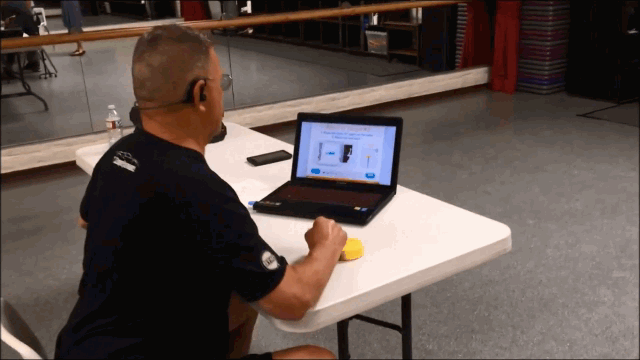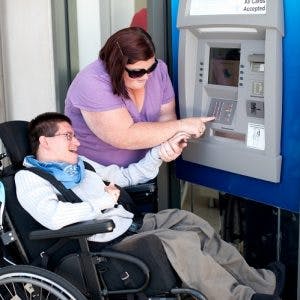Mild cerebral palsy refers to motor impairments caused by mild damage to the developing brain. Because the damage is not as severe, motor impairments may go unrecognized in the early years of childhood. However, as children with mild cerebral palsy develop, motor impairments may become more apparent. Fortunately, it is never too late for recovery. Even in adulthood, individuals with cerebral palsy can improve their movements.
To help you understand mild cerebral palsy, this article will discuss:
Signs of Mild Cerebral Palsy
Various factors can affect how mild cerebral palsy affects movement. For many, symptoms may be so subtle that motor impairments are not outwardly noticeable until the child begins intentionally moving around.
The Gross Motor Function Classification System (GMFCS) is often used to classify how severe an individual’s cerebral palsy is. It consists of 5 levels, with level 1 being the mildest and level 5 the most severe.
Individuals with mild cerebral palsy are often classified as GMFCS level 1. These individuals are generally able to walk and perform everyday activities without assistance. Because they’re able to maintain their independence, mild CP can go unnoticed and consequently untreated for years. However, it is essential to know what the signs of mild CP look like in order to prevent complications from progressing.
Signs of mild cerebral palsy include:
- Abnormal walking: walking on the toes, walking on the heels, continuous bending of the knees, walking with toes pointing inwards or outward, slight limping, etc.
- Difficulty with fine motor skills: skills that require precision and dexterity such as writing
- Speech impairments: slurred speech, breathiness, or inability to speak (associated with non-verbal cerebral palsy)
- Slow movements/low muscle tone: children that lack muscle tone may demonstrate slow movements, low strength, and have poor head and trunk control
- Stiff movements/high muscle tone: children with too much muscle tone (a condition called spasticity) may demonstrate stiff, rigid movements
- Poor balance and coordination: especially if the cerebellum has sustained damage (associated with ataxic cerebral palsy)
- Poor posture: such as leaning/tilting towards one side, rounded shoulders, or bent knees when standing
- Tremors: involuntary, rhythmic, and oscillatory movements
Now that you understand what signs to look out for, let’s discuss the importance of early intervention.
The Importance of Early Intervention for Mild Cerebral Palsy
While the brain damage that causes cerebral palsy will not progress, secondary effects (such as abnormal muscle tone and chronic pain) can worsen over time. Therefore, early intervention is key for preventing the progression of secondary complications.
When a child grows up with unmanaged mild cerebral palsy, their motor impairments have had a long time to manifest. As a result, they may develop maladaptive movement patterns. Because children with cerebral palsy likely learn to walk and complete other daily activities with abnormal muscle tone, they don’t necessarily understand what it is like to go about daily life without it. As a result, it can be more challenging to replace these habits.
A leading CP neuroscientist, Dr. Karen Pape, explains in her book that when you ask a child with mild cerebral palsy to walk with correct form, they’ll typically be able to demonstrate their ability to do so. However, they quickly resort back to their previous gait pattern out of habit. The only way to replace this habit is to have your child consistently practice walking with good form.
This promotes the brain’s ability to make adaptive changes, neuroplasticity. Children’s brains have greater levels of neuroplasticity than those of adults. Therefore, it’s essential to take advantage of these increased amounts of neuroplasticity to help individuals with mild CP improve their motor functions before maladaptive movement patterns cause further complications.
The sooner motor impairments are addressed, the quicker and easier it is for children to learn new movement patterns that can replace the maladaptive ones. This stands true not only for walking, but also for other tasks that have been affected by a child’s cerebral palsy, such as running, speaking, or writing.
However, it’s also important to understand that the brain never runs out of neuroplasticity, so there is always potential to improve. Up next, we’ll discuss various interventions that may be involved in the management of mild cerebral palsy.
Mild Cerebral Palsy Treatment
Every case of mild cerebral palsy is unique and requires a personalized approach to management. The brain is always capable of adapting and with the right interventions put in place, individuals may be able to improve their motor functions.
One of the most common effects of mild cerebral palsy is spasticity. It is the underlying cause of many additional motor impairments including stiff movements, abnormal gait, and poor fine motor skills. By relieving spasticity, individuals can better participate in rehabilitative therapies and significantly improve their quality of life.
Below, we’ll discuss various treatments for spasticity in individuals with mild cerebral palsy.
Physical Therapy
Physical therapy focuses on helping individuals improve their mobility through targeted exercise. Continuously practicing the therapeutic exercises learned in physical therapy helps stimulate the brain and encourages it to make adaptive changes. As a result, movements affected by spasticity may be able to be reorganized to unaffected regions of the brain and improved.
Want 19 pages of CP recovery tips in PDF form? Click here to download our free illustrated ebook now (link opens a pop up for uninterrupted reading)
Orthotics
If CP affects your child’s legs, it’s essential to correct their form before encouraging them to continue walking. Walking with an abnormal gait only reinforces poor walking habits, which may lead to chronic pain and increased difficulty with walking in the future. Wearing an orthotic device such as a brace can help hold the leg in place so it is positioned appropriately for walking.
This will help lengthen and support the affected muscles by gently stretching and preventing the leg from coiling up. It will also help strengthen your leg muscles as it passively resists against the contraction. It is important to practice walking with an appropriately fitted brace as needed in order to achieve a proper gait pattern.
On another note, when a child is having difficulties with spasticity in their hands or wrists, they may be recommended to use an orthotic called a splint. Similar to a brace, a splint will stretch the hand or wrist muscles for more functional positioning.
Botox
Physicians can inject Botox into spastic muscles to help individuals with cerebral palsy manage their spasticity. Botox works by blocking overactive nerve signals that cause muscles to involuntarily contract. The injection typically lasts for a few months before the muscles start to tighten again.
While not all individuals with mild cerebral palsy may need Botox to overcome spasticity, it allows those that do the opportunity to practice moving without the impact of spasticity. Even when the effects of Botox wear off, individuals can often maintain much of the progress they made while their spasticity was more controlled.
Baclofen
Baclofen is a muscle relaxant that can be taken orally or pumped directly to the spinal cord via a surgically implanted intrathecal baclofen pump. Generally, individuals with mild cerebral palsy will take baclofen in pill form as their spasticity is not severe enough to warrant surgery.
Similar to Botox, the effects of baclofen are temporary, and intensive physical therapy is recommended to promote better motor control.
Occupational Therapy
Children with mild cerebral palsy may also benefit from participating in occupational therapy. Occupational therapists can work with your child to enhance their participation in daily activities, including play, school, and self-care. They may include fine motor activities, sensory integration, and self-care training during their treatments.
Addressing spasticity in the hands and arms may help children more easily complete writing, manipulation of toys, and self-care activities. Again, repetitively practicing activities facilitates brain rewiring to make these activities easier in the future. Occupational therapists mainly use engaging activities, as opposed to exercises, to address the needs of a child with mild cerebral palsy.
Additionally, occupational therapists may suggest the use of compensatory strategies or adaptive equipment to increase a child’s ease of participation in certain activities, such as using a slanted surface for writing or using a utensil with a larger grip.
Speech Therapy
Speech therapists can address far more than just speech. Although not as common, some children with mild cerebral palsy have trouble with speaking, chewing, or swallowing due to spasticity affecting the facial muscles and neck muscles.
A speech therapist may be able to help with all of these areas. Speech therapists may use games or tongue and lip exercises to address the needs of children with cerebral palsy. They may also teach children alternative communication methods to use as needed.
Home Exercise
It’s essential to practice activities and exercises learned in physical, occupational, and speech therapy at home as well. Consistent practice helps reinforce demand in the brain, which promotes neuroplasticity and helps individuals improve their mobility quicker.

One way to help individuals with mild cerebral palsy stay motivated to practice at home is to use interactive neurorehabilitation devices. FitMi is a fun and engaging home rehabilitation program that encourages individuals to perform high repetitions of therapeutic exercises. It includes 40 of the top hand, arm, core, and leg exercises recommended by physical and occupational therapists.
Learn more about FitMi Home Therapy »
Understanding Mild Cerebral Palsy
Even mild forms of cerebral palsy have the potential to become more severe if its effects are not properly managed. Therefore, it’s important to learn how to effectively manage problems like spasticity to prevent future complications.
We hope this article helped you better understand the signs of mild cerebral palsy and what you can do to manage its effects. Early intervention is key, so make sure to see a doctor for an official diagnosis if you notice any signs.











